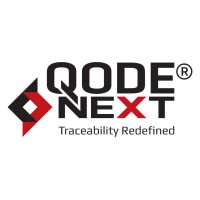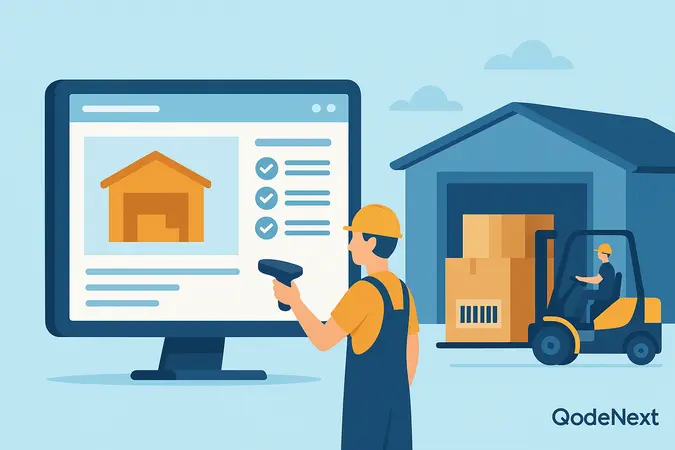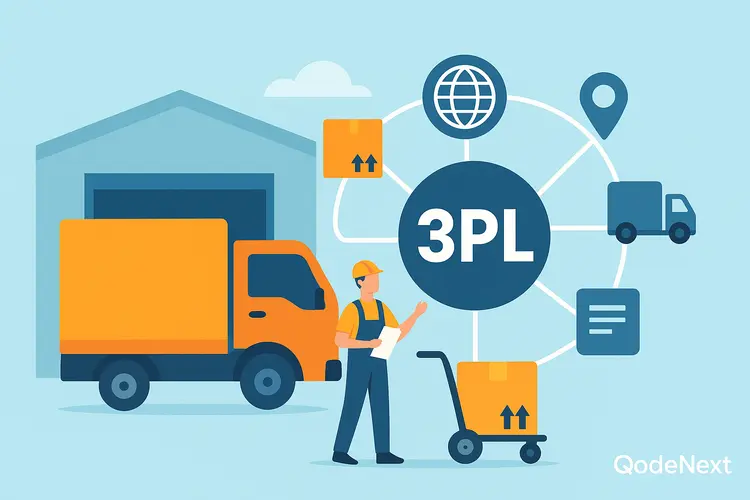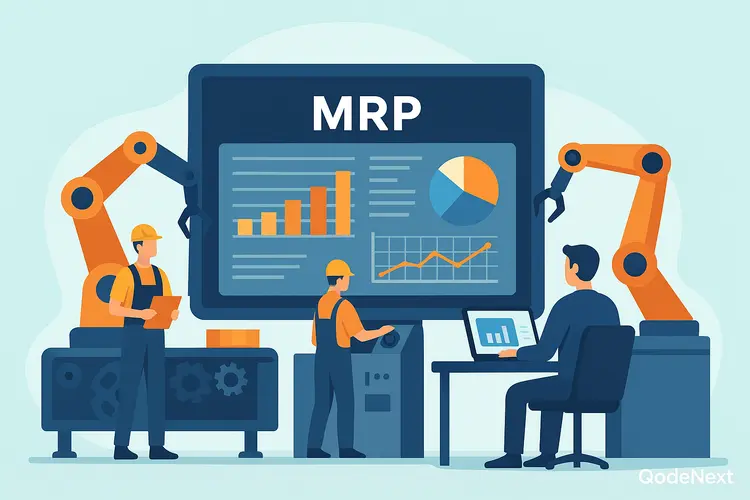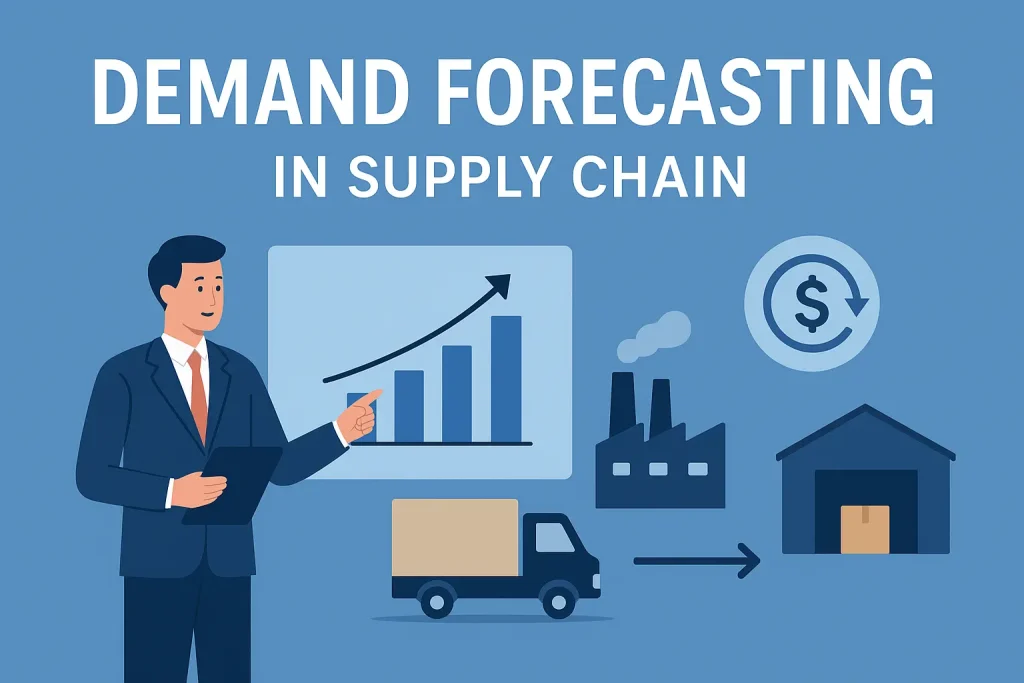
You undoubtedly immediately learned that you need a barcode if you’ve ever tried to sell your product on Amazon, in grocery shops, or even send it to foreign countries. It looks like it should be easy, doesn’t it? All you have to do is receive a barcode, print it out, and put it on your package. But that’s where a lot of small businesses get stuck: bogus sellers, “barcode packages” that cost too much, and registrations that look authentic but don’t work when major shops scan them. This guide will explain to you step by step how to generate barcode for product for your goods safely, or more particularly, how to do it without getting scammed.
Let’s start by talking about what a barcode is and why it’s more than just lines.
What a Barcode Really Means
A barcode is more than just a label; it’s the digital identity of your product.
It helps systems all around the world find, maintain track of, and sell your goods. Every barcode has information about your firm, the product ID, and sometimes the country. When you scan this code, it links your real merchandise to a record in a database.
This makes sure that everything is correct with shipping, billing, and inventory.
When you search for how to make a barcode for a product, you’re really making a universal ID that stores and platforms can use to find your product and prove that it exists.
This is where it gets tricky, though: not all barcodes are the same.
Why a Lot of People Get Scammed When They generate Barcodes
Every month, thousands of new business owners and D2C businesses look online for “how to make a barcode for my product” and find a lot of cheap options. “Only ₹499 for 100 barcodes!” “Good for life!” “GS1 checked!”
The truth is that most of those transactions don’t have authentic GS1 codes.
These bogus merchants frequently sell company prefixes that used to be valid but aren’t anymore. Most of the time, they are old or used. Retailers and online businesses may easily see this, which could mean that product listings are rejected or, even worse, removed from the site.
Signs of a Barcode Scam
- There is no GS1 prefix or firm registration.
- Claims of “bulk barcode packs” that you may download right immediately.
- Prices that don’t make sense (official barcodes are never sold for ₹100 once).
- There is no way to prove that there is customer service or an address.
The rule is easy: if it seems too good to be true, it generally is.
How to generate barcode for product the Right Way
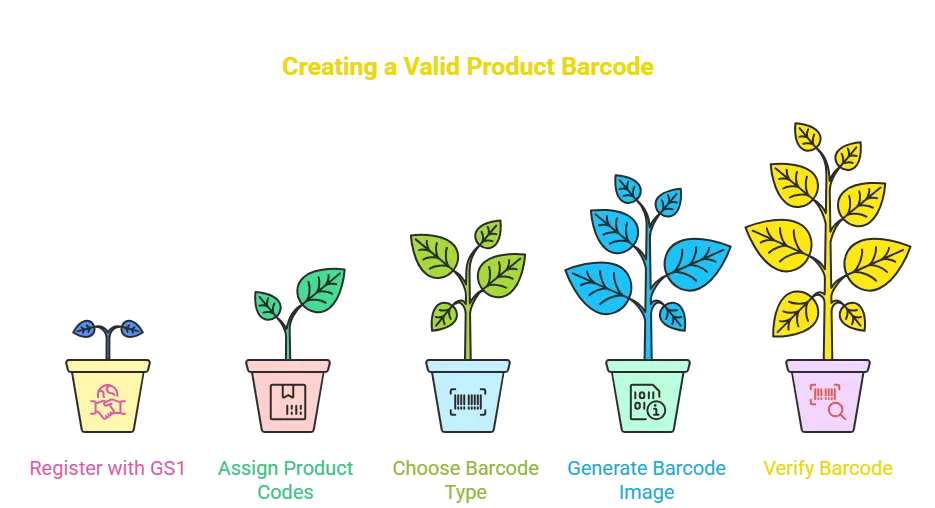
You need to do a few things to make a real barcode before you can use a barcode system in your factory.
This is the correct method to accomplish it.
Step 1: Sign Up with GS1, the World Authority
GS1 (Global Standards 1) is a company that people all around the world trust to make barcodes. GS1 makes the barcodes for all real products, from Coca-Cola cans to local snack brands.
Go to the official GS1 webpage for your country. For India, it’s gs1india.org.
You will need:
- Your business name and how to get in touch with you
- Information about the product, such as its name, type, size, and so on
- Valid GST and business registration
GS1 will then offer you a Company Prefix, which is the first part of the numbers in your barcode.
Step 2: Give Each Object a Code
You can give each product its own number once you have your prefix.
For instance, if you sell 10 various sorts of snacks or 5 different kinds of beverages, each item receives its own number. This allows you keep track of each stock keeping unit (SKU) separately.
This stage is very crucial if you want to learn how to generate barcode for food items. Each flavor or pack size needs its own barcode.
Step 3: Pick the Kind of Barcode
There are many different types of barcodes, but these are the ones that stores use the most:
- EAN-13 (13 digits): Used all around the world for retail goods
- 12-digit UPC: Mostly used in Canada and the US
- GS1-128 and ITF-14: For shipping boxes and cartons
If you want to sell packaged items or go into stores, EAN-13 is the best option.
Step 4: Make the Barcode Image
Once you have your digits, GS1 or licensed software can assist you produce the barcode image file in formats like PNG, EPS, or PDF.
You may either print it right on the box or make labels that attach to it.
Don’t trust “free barcode generators” that suggest they can produce actual GS1 barcodes online. They might merely make pictures, not genuine codes.
Step 5: Check and Try Again
Always check your barcode using an internet scanner before you go live. You can use these tools to check the barcode online to see if it is readable and in the appropriate format.
There are free online applications that let you scan from your phone or PC. This is an easy way to evaluate the quality of your print and make sure it is in line.
How to generate Barcode for Food products (Special Instructions)
If you wish to sell food and drinks in stores or send them to other countries, there are more restrictions you need to follow.
When you learn how to generate barcodes for product related to food, keep these factors in mind:
- The FSSAI in India has guidelines about packaging that specify your barcode can’t hide information about how the product was created or its nutritional value.
- Add the batch number and the date of expiration. Scannable codes make it easy to remember when things go bad.
- Use the EAN-13 format. Grocery and retail stores appreciate it since it’s quick to scan at the register.
- Keep Track: It’s easier to identify recalls for products with more than one ingredient when they have batch-linked barcodes.
- Sign up early: Food barcodes often have to go through further testing and certification before they can be utilized by distributors.
Many new FMCG companies generate barcodes before they even finish packaging. This allows them see how well the device works and how well it scans at different stores.
Things That People Often Get Wrong When They Make Barcodes
Even honest sellers might make blunders that cost them money. Here are some things you shouldn’t do:
- Some establishments won’t take codes that aren’t registered, even if they scan correctly.
- Using old barcodes again: You need a new number for each new product or version.
- Poor printing quality: When the photographs are low resolution, scans don’t work.
- When you scan them, barcodes that are too small or too close to folds won’t operate.
- Not checking: Always check your barcode scanner online after you print.
It’s important to do it perfectly the first time because repairing mistakes later might cost a lot of money.
Why You Should Never Buy “Cheap Barcodes” on the Internet
You can pay a modest price to get barcode downloads straight now on hundreds of websites. They could look like they belong to a firm, and some even replicate GS1 logos, but they’re not real.
This is Why It’s Risky
- Invalid Prefixes: The code might not work for your company.
- Retail Rejection: Amazon, Flipkart, and BigBasket check to determine if GS1 is legitimate.
- Global Blocklisting: You can flag codes that aren’t valid for good.
- Legal Risks: Using a prefix from another organization could mean that you are infringing intellectual property regulations.
If you wish to make a barcode for your goods, the only safe way to accomplish so is through GS1 or another certified route. It may not be the quickest route, but it is the one that lasts.
Real Options for Small Businesses
If GS1 seems too hard or pricey at first, try one of these tried-and-true options:
- Licenses for GS1 in the Short Term: Some nations let small enterprises sign up for a year.
- Local Business Support Programs: Startup incubators and chambers of commerce often help new enterprises get GS1 numbers.
- Retail Partner Programs: Some big stores provide small businesses temporary barcode numbers so they may start right away.
No matter what you do, every legitimate barcode will eventually lead you back to GS1.
How a Small Food Company Did Things Right in the Real World
For example, Harvest Lane Foods is a local brand of granola and snacks. They wanted to sell their products in grocery shops, but they didn’t know how to develop food barcodes that worked.
They didn’t buy barcodes online that were cheap. Instead, they went to GS1 India, registered their prefix, and gave each flavor and pack size its own barcode.
In just a few weeks, they could post their things on BigBasket and Amazon Pantry. Their barcodes worked wonderfully with all kinds of retail scanners. When customers paid for true registration, they got their money’s worth. Each scan became proof of validity, not just a transaction.
Finally, It’s Worth the Work to Be Honest
Making a barcode may seem like a simple thing, but it’s one of the best methods to encourage consumers to trust your product.
You’re really starting to make your business known and easy to find all around the world when you look up how to produce a barcode for a product. Fake sellers and shortcuts may offer to get things done faster, but they can ruin your listings, your reputation, and your peace of mind.
So, if you’re trying to figure out how to generate barcode for products or for food, keep in mind that it has to be authentic.
Faqs: How to generate Barcodes for products — Don’t Get Scammed and Do It Right
1. How do you make a barcode for an item in India?
Get a company prefix from GS1 India, give each product a unique number, and use GS1-approved software to produce barcode pictures.
2. Are you able to make barcodes for free?
You can take images of barcodes for free, but not true GS1 codes. The only way to be sure that your barcodes will work worldwide is to sign up with GS1.
3. How do you produce a barcode for goods that will be shipped to another country?
Use the GS1 EAN-13 format. Check that the barcode follows the criteria for food labeling and links to product information in the GS1 database.
4. Are there any websites where I can get barcodes?
It’s not safe. A lot of these barcodes are fraudulent or have already been used. Before you buy something, make sure it is registered with GS1.
5. Do I need a distinct barcode for each size of package?
Yes. To keep track of sales and inventory effectively, each size, flavor, or package type needs its unique barcode.
